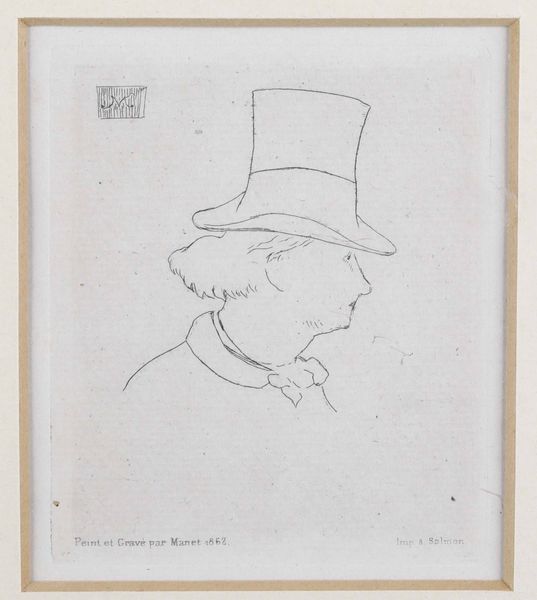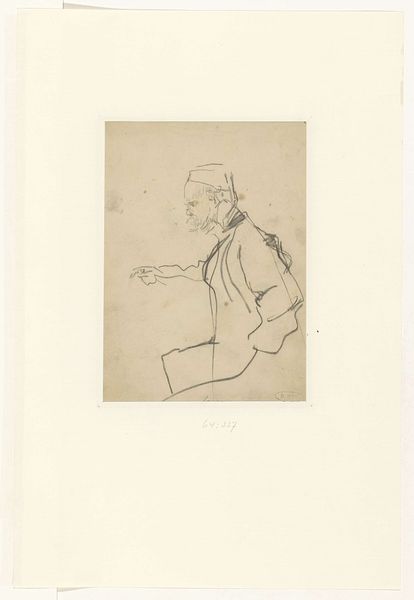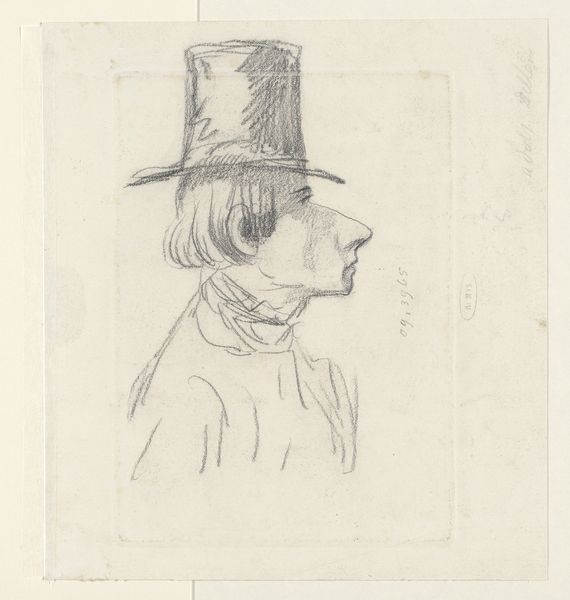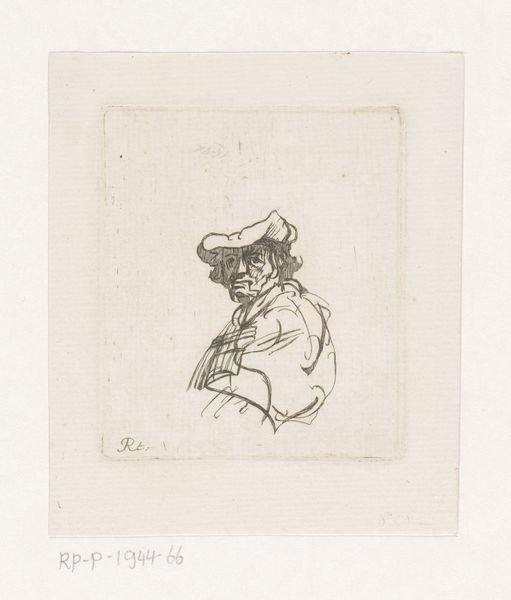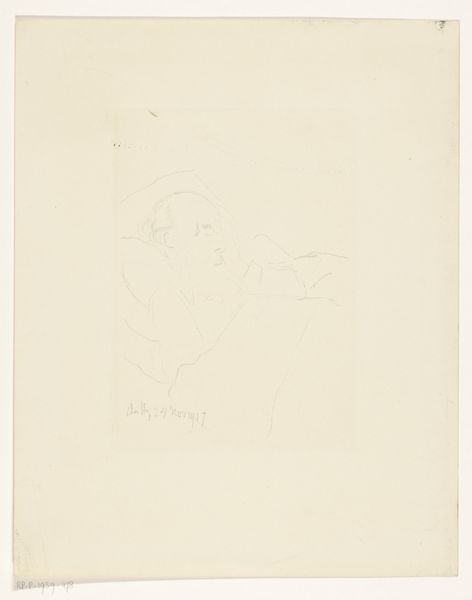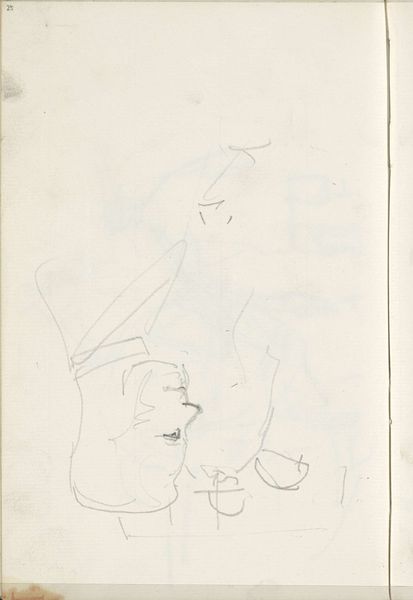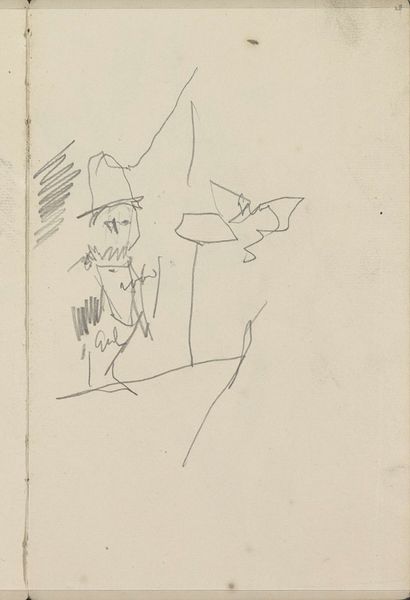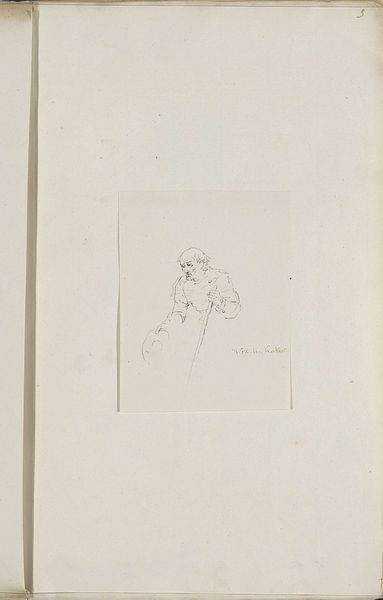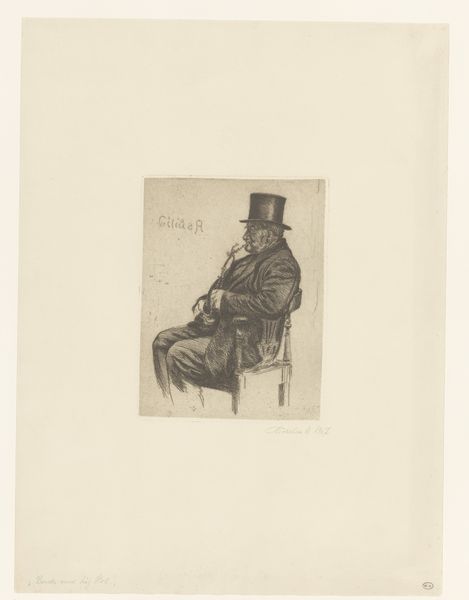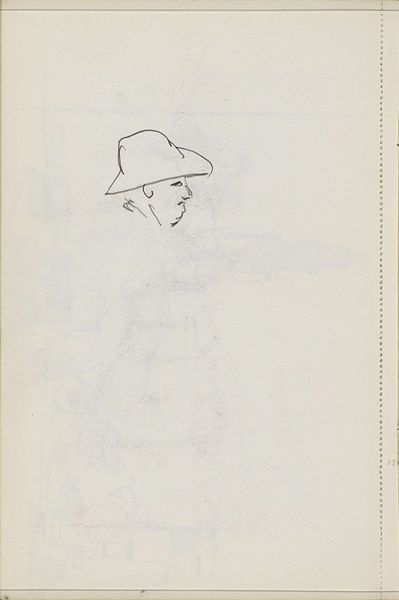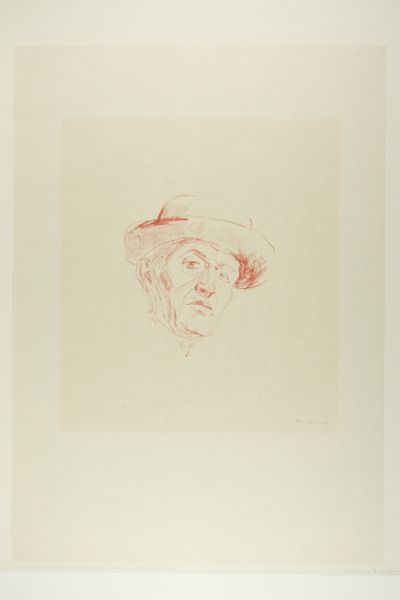
drawing, pencil
#
portrait
#
drawing
#
self-portrait
#
impressionism
#
pencil sketch
#
pencil
#
line
Dimensions: height 102 mm, width 87 mm, height 323 mm, width 220 mm
Copyright: Rijks Museum: Open Domain
Curator: My eye is immediately drawn to the subject, almost overwhelmed by negative space; it feels both assertive and understated. Editor: Indeed. What we're looking at here is Edouard Manet's 1869 pencil drawing, "Portret van Charles Baudelaire met hoge hoed", or "Portrait of Charles Baudelaire with a Top Hat." Curator: Knowing this is a sketch made of graphite by Manet contextualizes the medium. What does the mechanical use of the pencil reveal about Manet's studio practice and potentially mass-produced element of his art, and their relationship? Editor: I see your point about materials, but I'm drawn to how this portrait encapsulates Baudelaire's persona. That severe profile, framed by the hat, it's like a study in dandyism, an embrace of the artificial. What sociopolitical forces might prompt the two men to adopt and adapt the "dandy" subculture during Haussmannization in Paris? Curator: The deliberate choice of pencil also challenges any conventional boundary, right? Graphite’s industrial roots position this piece outside the gilded world of high art of the time. Editor: Interesting take, though the Romanticism that would inform Baudelaire's view that fashion may be used for a pursuit of an ideal is relevant, and worth recognizing as well. It begs us to think about gender and identity within rigid, conformist cultures. Curator: I would also add that the use of sketching offers a lens through to Manet's creative decision making, his working through form. Editor: Exactly. This sketch reminds us of art’s vital role in understanding social identities and lived realities in nineteenth century Paris. Curator: And even beyond that! The art world today has changed thanks to works just like these.
Comments
No comments
Be the first to comment and join the conversation on the ultimate creative platform.
